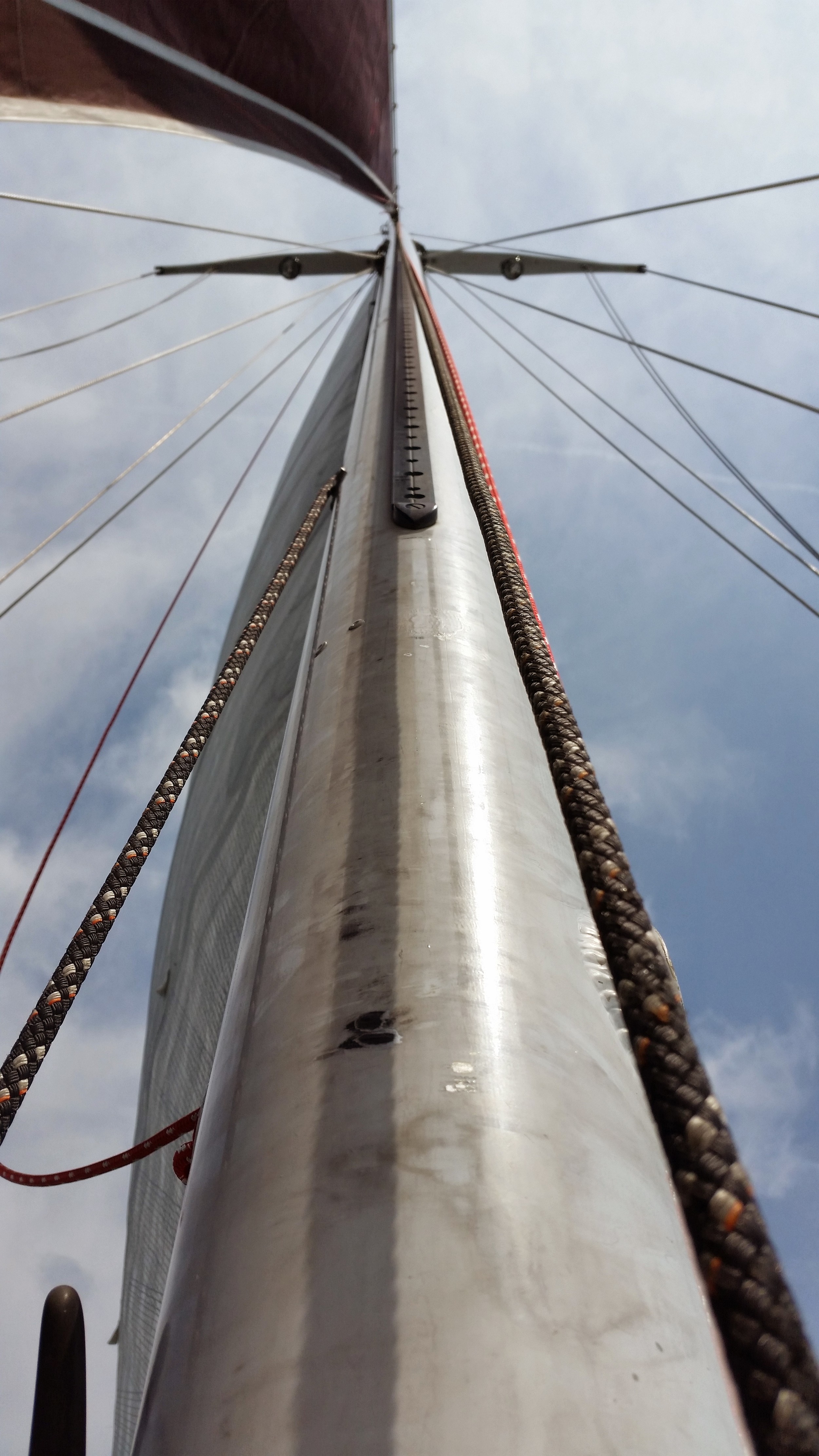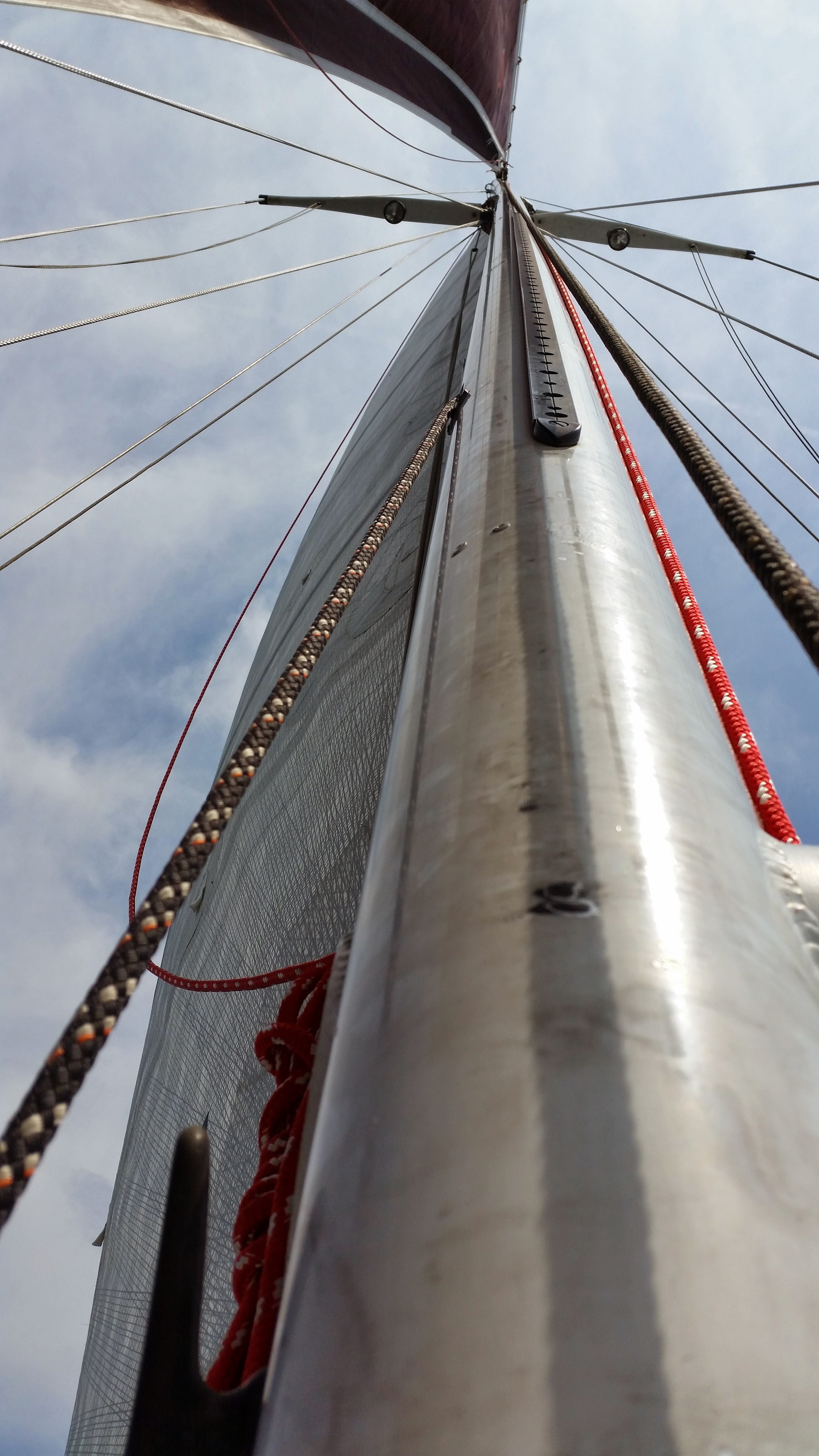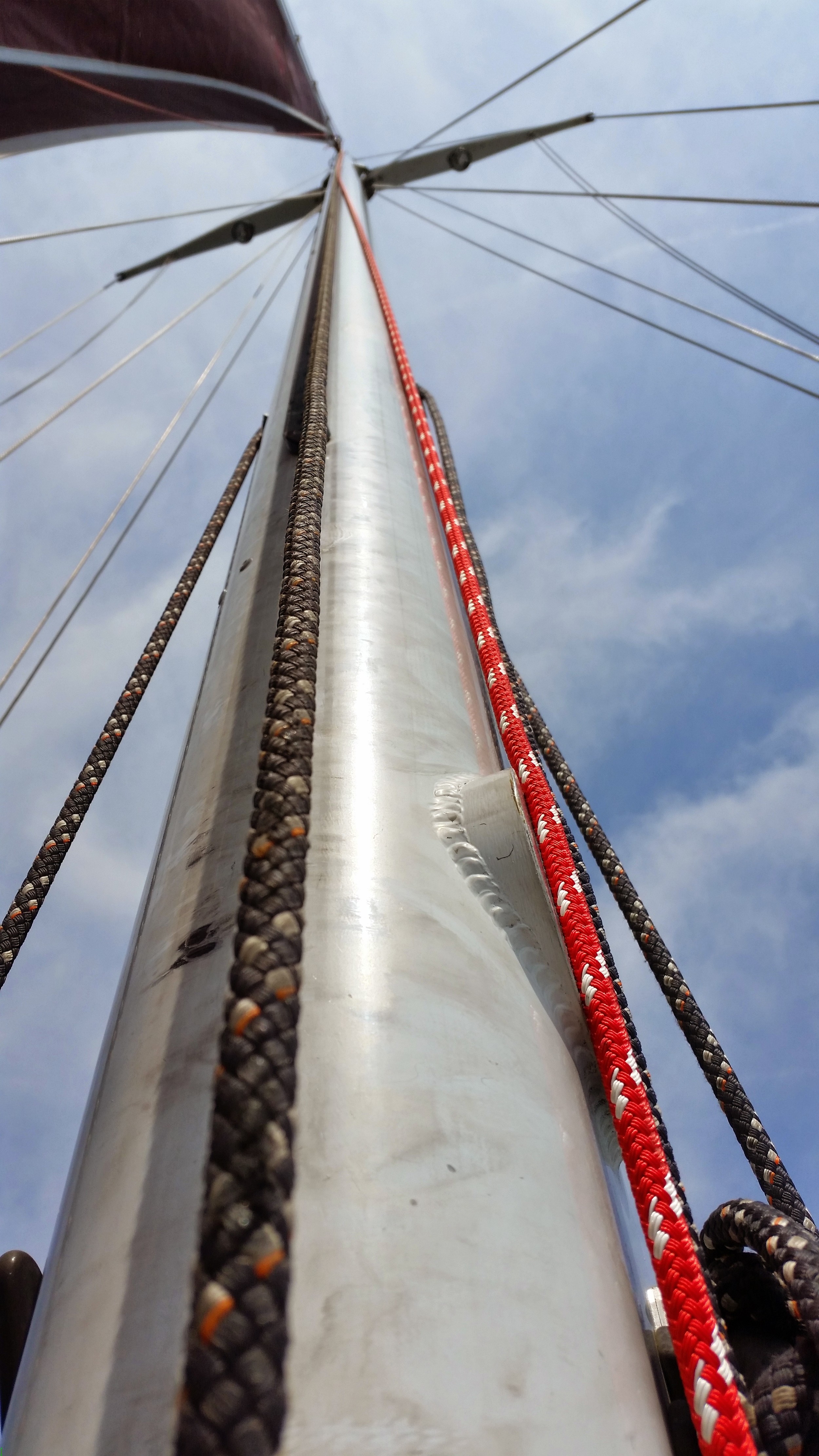Sighting the mast is very easy. What you are doing is making sure that it is straight and centered over the boat. A straight mast that hangs off to port is not very good! You need to make sure everything is lined up.
To make sure the mast is straight, you will stand in front of the mast and put your eye right next to the forward part of the mast looking up. You are looking for any deviation left or right. Next, you will lay down on deck in front of the mast and look up again. Does it still look straight?
If you have any question about it leaning, stand next to the port side and put your eye up to the mast and look up. Does it look like it curves toward you or bends away? Next stand on the starboard side and do the same. Does it look the same as the port side? If it's straight, both sides will look the same.
This might be difficult to get the knack of at first, being a dentist it came naturally. I need to be able to judge angles down to the 0.5° when doing crowns and fillings. Just look at it hard and see what there is to see, that's all it takes to sight the mast for straightness.
To make sure the mast is centered port-starboard, use a jug of water tied to a halyard that comes out of the center shiv and make sure it lays to the port toe rail at the same point that it lays to the starboard toe rail.
To check for rake, walk away from the boat and from a distance look at the boat dead on from the side. Rake will now be very obvious. Too much rake will lead to weather helm, while too little will lead to lee helm.
Another way to check rake on board is to look up the aft side of the mast and make sure you see it falling towards you while the forward side looks like it's falling away from you.
Now that you have sighted the mast to make sure it's straight and with proper rake, it is time for the final check.
Walk far away from the boat, to a neighboring pier and look at it dead on from the bow or stern. Does the mast look straight? Is there a side bend or an S bend?
Lastly, do the spreaders look right? They are supposed to bisected the shrouds. This means that the angle above the spreader and the shroud is the same as the angle below the spreader and the shroud. They always tend to have a slight up flow from the mast. If they come out horizontal to the horizon, they are probably drooping down and need to be raised. This tends to happen when the cap shrouds are tightened, it will pull the spreader tips down.
If you have trouble looking at the mast and figuring out if it is straight and if the spreaders are right, just take a picture and double check on your computer screen.
On the computer, you can draw a straight line and lay it over the mast. It should mostly lay in line over the mast from head to deck. If the mast sways out from the line, you will need to adjust it.
For the spreaders draw a triangle shape that fits on top of the spreader where the points are middle top of spreader, spreader tip /shroud junction, a point on the shroud. Now mirror the shape and make sure it can fit on the underside of the spreader. A little deviation is normal, but you want to avoid extremes. Too much up sweep and the spreaders could fold up under load and that would probably lead to the mast folding over. Too much droop and the spreader can fold down, resulting in the same. It needs to hold the shroud out so that the force is straight towards the mast and nothing else, not up, not down, just balanced.
Lastly, with this photo, draw a horizontal line from port to starboard across the deck and make sure the mast is perpendicular to this line. If the boat lists in the water, the mast will look tipped to one side. This is fine as long as it is perpendicular to the deck.
If anything appears wonky, it is always a simple adjustment away from being fixed. Remember that stays only pull, they never push. If the mast is bent to starboard, loosen the starboard stay in that area and tighten the port stay in that area. It is much like truing a bike wheel, where the spokes function exactly like stays do.










